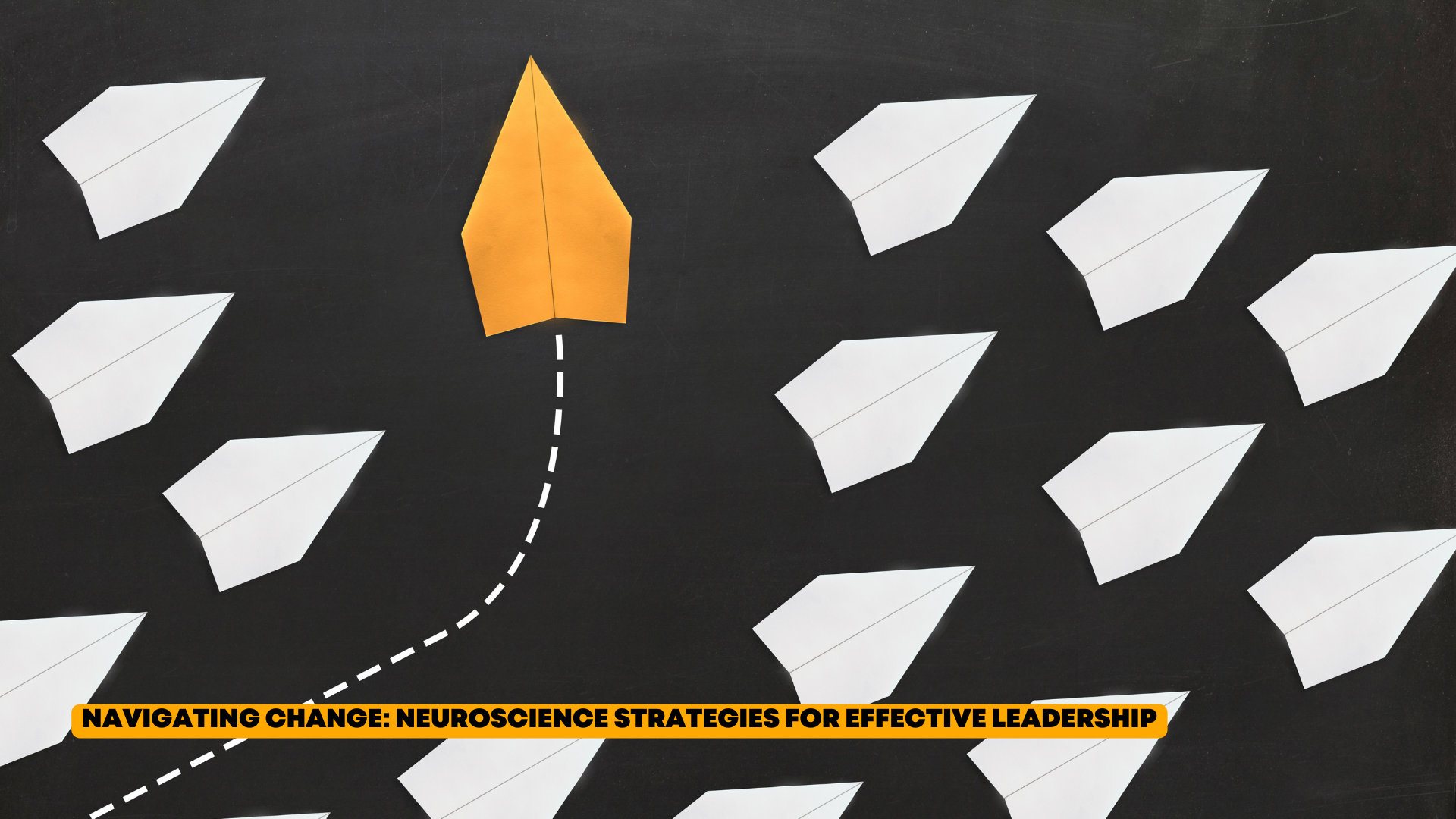Building High-Impact Teams: Strategies for Successful Collaboration
Team dynamics are the unseen forces that operate in a team between different people or groups. These dynamics are pivotal in determining how a team functions, collaborates, and ultimately, succeeds. Good dynamics lead to increased productivity, better decision-making, and a more satisfying work environment. But, poor dynamics can lead to misunderstandings, low morale, and a drop in performance.
In a business context, team dynamics are not just about getting along or working well together. It's about creating an environment where each member's strengths are utilized, and their weaknesses are supported. It's the harmony of skills, personalities, and values, working towards a common goal. This harmony is vital in today's diverse and fast-paced business world, where teams often form the core of organizational success.
Neuroscience Perspective
Our brains are wired to connect with others – a phenomenon known as the 'social brain'. This wiring impacts everything from our communication styles to how we solve problems and make decisions as a team.
Neuroscientific studies have shown that certain conditions can enhance the brain's ability to work well within a team setting. For instance, when team members feel safe and trusted, their brains are more likely to release oxytocin, a hormone that enhances social bonding and collaboration. Similarly, understanding the role of neurotransmitters like dopamine in motivation can help in creating team environments that are both stimulating and rewarding.
Key Elements of Strong Team Dynamics
Trust
Trust is the cornerstone of any strong team. It's the glue that binds team members together, allowing them to feel safe and secure in taking risks and sharing ideas. From a neuroscience perspective, trust is closely linked to the release of oxytocin, a hormone that enhances feelings of bonding and collaboration. When team members trust each other, their brains are more relaxed, leading to better problem-solving and creativity.
Building trust within a team requires consistent, transparent, and honest communication, and a culture where mistakes are viewed as learning opportunities rather than failures.
Communication
Effective communication is vital for successful team dynamics. It's not just about exchanging information; it's about ensuring that this information is understood and acknowledged. Neuroscience shows us that good communication can align team members' brains, leading to a phenomenon known as neural synchronization.
This synchronization facilitates smoother collaboration and understanding, as team members are literally on the same wavelength. Encouraging open, respectful dialogue and active listening can significantly improve the quality of communication within a team.
Diversity and Inclusion
Diverse teams bring a range of perspectives, ideas, and problem-solving approaches. Neuroscience supports the idea that exposure to diverse stimuli (including diverse perspectives) enhances cognitive flexibility – the brain's ability to adapt to new information. An inclusive environment where different viewpoints are valued and respected can lead to more innovative solutions and a more adaptable team.
Creating such an environment involves actively seeking and appreciating differences, and fostering a culture where everyone feels they belong and can contribute.
Common Goals
Shared goals align team members towards a common purpose. This alignment is not just metaphorical; neuroscience shows that when people work towards a shared goal, their brain activity starts to align, enhancing cooperation and efficiency.
Setting clear, achievable goals and ensuring every team member understands their role in achieving these goals is crucial. Regular check-ins and updates can help keep the team focused and motivated.
Challenges in Team Collaboration
Even the most well-intentioned teams can face obstacles that hinder their dynamics and collaboration. Recognizing these challenges is the first step in overcoming them. Common issues include:
Despite efforts, misunderstandings can occur, leading to confusion and conflict.
Without trust, teams struggle with openness and honesty, crucial for effective collaboration.
Divergent personal or departmental goals can disrupt team cohesion.
Unaddressed biases or a lack of inclusion can stifle creativity and innovation.
Neuroscience Insights
Neuroscience offers valuable insights into why these challenges arise and how they impact team performance:
The brain's preference for predictability means that unclear communication can cause discomfort and confusion. Ensuring clarity and consistency in communication helps align understanding and expectations.
Trust is linked to the brain's reward system. When trust is lacking, the brain's threat response can be activated, leading to defensiveness and reduced collaboration.
When team members have conflicting goals, it can lead to cognitive dissonance, a state where the brain struggles to reconcile differing beliefs or values. Aligning team goals helps to minimize this dissonance.
Resistance to diversity can limit the brain's exposure to new and varied stimuli, essential for brain plasticity and creativity. Promoting an inclusive environment encourages cognitive flexibility and innovation.
Strategies for Enhancing Team Dynamics
Building Trust
Trust is fundamental to any team's success. To build trust:
Encourage open sharing of information and intentions.
Be dependable in actions and decisions.
Allow team members to express ideas and concerns without fear of negative repercussions.
Improving Communication
Effective communication is key to understanding and alignment. To improve communication:
Encourage team members to listen with the intent to understand, not just to respond.
Ensure that messages are clear and understood by all team members.
Create opportunities for team members to share updates and feedback.
Promoting Diversity and Inclusion
Diversity and inclusion bring a range of perspectives and enhance problem-solving. To promote them:
Actively seek input from all team members, especially those who may be less vocal.
Help team members recognize and address their biases.
Acknowledge and value the different backgrounds and experiences that each team member brings.
Aligning Goals
Aligned goals ensure that everyone is working towards the same objectives. To align goals:
Ensure that team goals are understood and embraced by all members.
Keep goals relevant and adaptable to changing circumstances.
Help team members see how their personal goals fit within the team's objectives.
Role of a Leader in Fostering Effective Team Dynamics
The way a leader navigates team dynamics can significantly influence the team's success. Various leadership styles, from authoritative to democratic, can shape the team's environment and work culture. Understanding the nuances of these styles and adapting them to suit the team's needs is crucial. For instance, a more participative leadership style might encourage open communication and collaboration, while a more directive style could be effective in decision-making during critical situations.
Leading with Neuroscience in Mind
Incorporating neuroscience into leadership involves understanding how different leadership approaches can affect team members' brains and, consequently, their behavior. For example:
Empathetic Leadership: Recognizing and responding to team members' emotional states can foster a positive work environment. Empathy activates neural pathways associated with social bonding and cooperation.
Encouraging Growth: Adopting a growth mindset and encouraging learning and development can stimulate neural pathways associated with learning and adaptability.
Managing Stress: Understanding how stress affects the brain and implementing strategies to manage it can prevent burnout and maintain productivity.
A leader who is aware of these neurological aspects can create an environment where team members feel valued, understood, and motivated. This approach leads to a more cohesive and efficient team.
Drawing from my own experiences and observations in the field, let's explore a few examples where strong team dynamics led to remarkable outcomes:
A tech startup was struggling with low morale and high turnover. By implementing regular feedback sessions and promoting a culture of open communication, the team began to thrive, leading to an increase in innovation and a significant reduction in staff turnover. This turnaround was a testament to the power of effective communication and trust in revitalizing a team.
In a large corporation, a diverse project team faced initial challenges due to conflicting working styles and communication barriers. Through workshops focused on understanding and appreciating diverse perspectives, the team was able to harness their different strengths, leading to the successful completion of a complex, high-stakes project.
Lessons Learned
These cases also provided valuable learning opportunities:
The startup's situation highlighted the need for adaptability in leadership style, depending on the team's needs and the situation at hand.
The corporate project underscored the importance of diversity in problem-solving and how inclusive practices can lead to better outcomes.
Tools and Resources
To support the development of strong team dynamics, there are several tools and resources available that can facilitate this process:
Tools like Slack or Discord can enhance communication and collaboration, especially in remote or hybrid work environments.
Applications like SurveyMonkey or Google Forms can be used to gather anonymous feedback, helping leaders understand team sentiment and areas for improvement.
Tools like Asana or Trello can help in aligning goals and keeping everyone on the same page with project progress.
Neuroscience-Based Approaches
Incorporating neuroscience into team dynamics involves more than just understanding the theory; it's about applying this knowledge through practical approaches:
Techniques like mindfulness meditation can help reduce stress and improve focus, benefiting team dynamics.
Programs that focus on neuroplasticity and cognitive flexibility can enhance team members' adaptability and problem-solving skills.
Specialized training for leaders that combines leadership principles with neuroscience can lead to more effective team management.
The right mix of tools and neuroscience-based approaches can significantly enhance team dynamics, leading to a more cohesive, productive, and innovative team.
From my experience, it's clear that understanding and nurturing these dynamics can lead to remarkable outcomes. A team that communicates openly, trusts each other, embraces diversity, and works towards common goals is not just an asset but a necessity in today's fast-paced, ever-evolving business landscape.
Embrace these insights, apply them, and watch as your teams transform. The secret to successful collaboration lies in building strong team dynamics, underpinned by both human understanding and scientific insight.











Most recognition programs miss the mark because they lack what truly drives motivation: frequent, specific feedback that taps into the brain’s dopamine-feedback loop. This article dives into how dopamine-driven feedback creates lasting motivation, transforming your recognition program from routine to truly impactful.